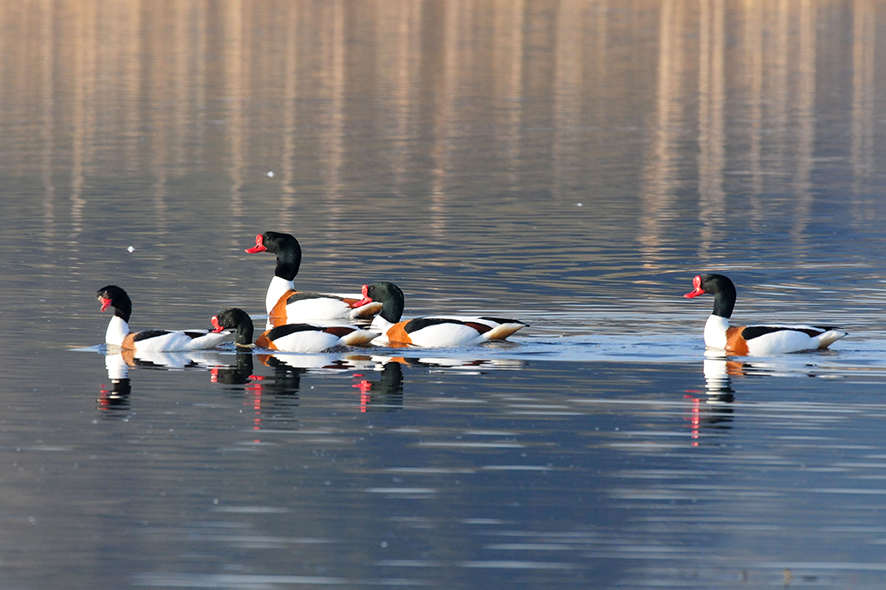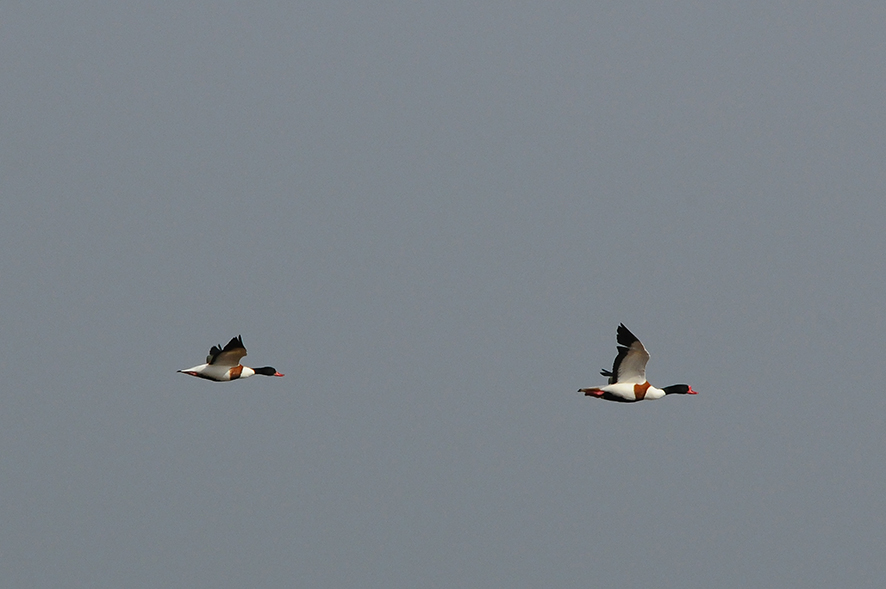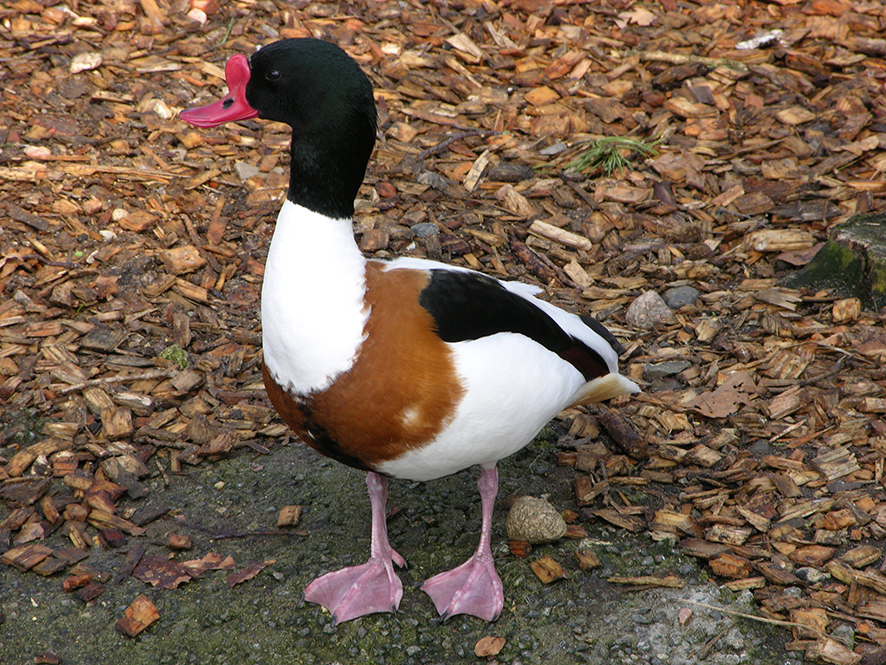Common shelduck
- As big as a goose

The common shelduck is a large duck which is easily recognised by its white, brown and black plumage and the metallic green head. Males and females have similar plumage, but the male is larger than the female and has a well-developed bud on its red beak that resembles the mute swan’s. The common shelduck is now a fairly common breeding bird in Denmark. At the end of the summer, large flocks of shelducks gather in the German Wadden Sea to moult their feathers. When the moulting is over, the birds spread out once again and many stay in the Wadden Sea area throughout the whole winter.

Denmark's bravest bird
The common shelduck’s name in Danish is ”gravand” (literally digging duck), which alludes to the fact that it lays its eggs in a pit/den. It can dig holes in embankments and cliffs, but it can also use a foxhole, a rabbit hole or a hollow tree. If the fox unexpectedly turns up, the shelduck will defend its eggs and young by swirling sand into the eyes of the fox, or even worse, dropping bird droppings on the head of the invader of the peace.
Facts
The Eurasian shelduck is the largest Danish duck with a length of 58-71 cm and a wingspan of 110-133 cm. It feeds on mussels and crustaceans that it finds in the ponds and sand banks along the coast. It breeds in coastal and shallow areas, but also inland by watercourses and lakes. The species is widespread in most of Europe, where there are two different populations; a western from South Sweden to Britain and France, and an eastern from Mediterranean to Central Asia.


